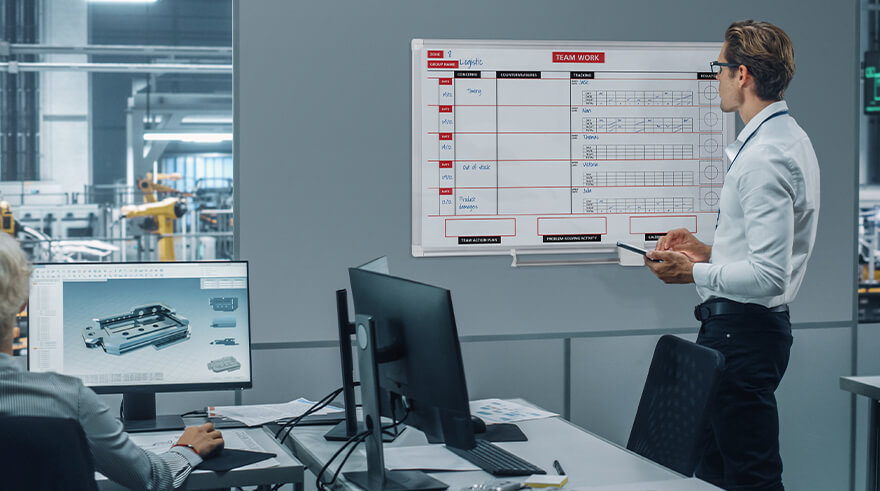For efficient and economical operation in a manufacturing unit, it is crucial to integrate a production plan and control system. Production planning is required for scheduling, dispatch, inspection, quality, inventory, supply, and equipment management. Production control ensures that the production team can achieve the required manufacturing targets, optimal utilisation of resources, quality management, and cost savings.
This plan needs to address specific key elements (materials, equipment, human resources, training, capacity) well in advance of production to ensure an uninterrupted flow of work as it unfolds. It provides a base to schedule day-to-day activities, approached individually based on their priority.
Lean Manufacturing planning
Lean manufacturing is one of the most used production processes nowadays. Its origins are in the automotive industry (Toyota), but the principles are the same across manufacturing. It’s a systematic approach to waste minimisation without compromising efficiency and productivity.
This method was developed for two reasons: consumer satisfaction and profitability. After all, the consumers are the pivotal factor in what will be bought. It only makes sense to manufacture a product that they choose out of all the competitors out there. Therefore, anything that is not providing value to the costumer is considered waste; also, there is no value in an item that doesn’t make you money.

Scheduling means estimating how many units of an item are to be manufactured and organizing production accordingly (push system). On the other hand, the kanban planning is a pull system: the next step in the process chain is activated only when necessary. If a particular component needs to be produced, the kanban is used as an order card to prompt the manufacture of the components that must be replenished. Lean manufacturing was designed to combine both push and pull planning systems.
Communicate the plan
After concluding that all the criteria have been met to start production, you will need to communicate the plan to the people who will implement it. Visual representation is the preferred medium to disclose operation schedules to floor employees. A product management communication plan is important because it creates expectations. You’ve got to make sure that everyone understands the process.
A wall or free-standing whiteboard and/or production board helps create awareness and visibility on the factory floor. It will make the person doing the day-to-day work on the line more mindful of what they’re doing and of the day’s or shift’s target. Things like losses or any event that could keep operators from hitting targets are transferred to the board.
Visual cues are part of any efficient production planning. They act as instant hints as to how operations should flow and where things like parts and work-in-process should go. These boards are how the shop floor knows what is being worked on for that day. It’s front and centre for all production workers to see.

Anyone walking by can easily understand where production is at any given time. Whiteboards and planning boards are easy to work with and are a better solution than traditional pen and paper. Paper doesn’t create any value until it is transferred to a report, and someone looks at it.
Implement a visual management board to express what you are going to achieve. Building a routine around updating and reviewing the displayed visual metrics will help your team meet its goals. The shared information allows you to understand the status of a situation at-a-glance, make sound decisions, and take correct and timely action.
Workplace information can change quickly and often. Manage visually the production status, quality standards, delivery status, or machine status. Visual communication products like these boards with indicators in place let everyone on the factory floor know how things are going.
Plan, track, prioritize, evaluate and display production information to everyone on your team. If you can’t find a production board that matches your expectations, you can always customize it as you please.
Create your own planner with our Custom Boards Web Tool and boost manufacturing efficiency.


.png)